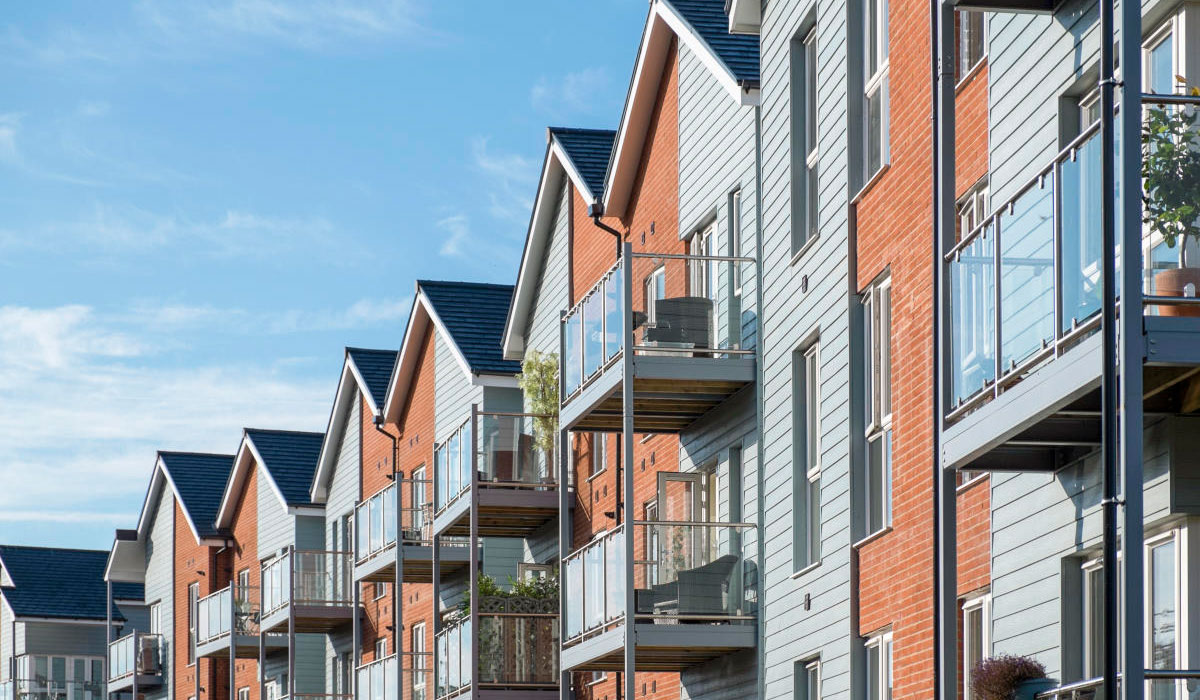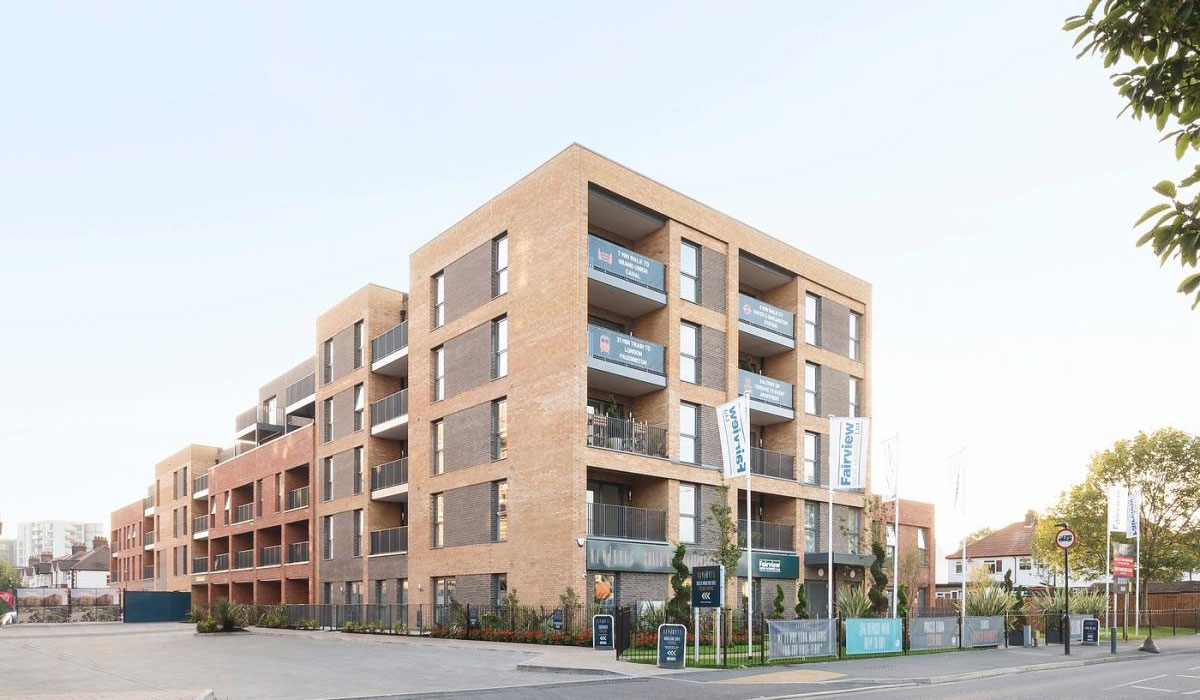How much value did your home gain in 2022?
12 in 13 homeowners enjoyed value gains in 2022, could you be one of them?
2022 started well…
2022 was a year of two halves for UK housing.
It kicked off with a strong start thanks to record-low mortgage rates and a continuation of the pandemic-driven desire to move.
These factors, combined with a chronic lack of homes for sale, meant house price growth remained strong up until the summer.
And looking across the year as a whole, 12 out of 13 homeowners saw the value of their home increase by an average of £19,000.
Among them, nearly 3 million homeowners made more than £50,000.
How much value did your home gain?
But then things started to change…
In the second half of the year, the picture became less rosy.
Rising living costs and a jump in mortgage rates halved the demand for homes, causing the rate of house price growth to start slowing rapidly.
In some areas of the UK the value of individual homes is now falling, writing off some of the recent pandemic gains.
How much value are homes losing?
Of the UK’s 30 million homes, 16 million experienced value losses by the end of 2022.
But for the majority of these homeowners, the drop is small. The average value reduction in the final 3 months of 2022 was £3,900.
When compared to the average value gain of £19,000 over the course of the whole year, this leaves most homeowners comfortably in the black for 2022.
And that figure becomes even smaller when noting the average home gained £32,400 during the first two years of the pandemic.
Within the group of 16 million homeowners experiencing value losses in the last 3 months of 2022, only 2.3 million (or 8%) registered a loss over the year.
For these homeowners, that average loss was £7,300.
And more than 26% of those homes were in London.
We estimate that 1 million homes lost all of the value their properties gained in the two years leading up to February 2022.
But these homes were found in areas where prices didn’t increase much during the pandemic in the first place, such as the capital, the South East and Scotland.
A further 7.3 million homeowners lost part of their pandemic paper gains in the last 6 months of the year.
However, while home values are starting to decline in some areas, in contrast to the national headlines, our price estimates for the UK’s homes reveal that 14 million properties saw their values increase in the final 3 months of 2022.
Where are homes losing value?
The reduction in home values over the second half of 2022 was concentrated in markets where price gains have been slower over the last year.
Homeowners in London have seen the largest number of reductions, followed by the South East.
The average reduction between June and December was £8,400 in London and £5,200 in the South East.
However in both these areas, more homes increased in value than fell, showing how the pressure on values is highly localised.
Outside of London and the South East, we found that three-quarters of homeowners saw the value of their home increase by an average of £6,600.
And price falls in these areas were modest, averaging £3,800.
Which areas are in demand right now?
In the latter half of 2022, some markets were faring better than others.
Our latest House Price Index found that affordable cities and suburbs continue to see strong demand for homes, while the outlook is weaker for the more expensive markets and rural locations.
Why are homes losing value?
Home values are starting to fall back because of weaker demand in the final 6 months of 2022.
Rising mortgage rates and cost-of-living pressures are causing some potential home movers to press pause for now. And a reduction in demand leads to a reduction in upwards pressure on house prices.
But while the number of homes losing value is growing: rising from 8 million in between July and December 2022 to 16 million in the 3 months to December 2022, it’s crucial to remember that these price reductions are fairly modest compared to the gains made in recent years.
What’s going to happen to home values in 2023?
The scale of value reductions has been relatively small so far but is likely to grow further in the first part of 2023.
We’re expecting to see national house price falls of around 5% for this year.
Homeowners who lose value may be put off moving or need to look at alternatives like cheaper homes or lower-value markets for their next move.
That said, we’re still expecting 1 million property transactions to take place this year as the pandemic-driven search for space continues. The ability to work from home remains for many office workers, which has opened up the location landscape for many.
Those in retirement, who may be cash buyers or looking to downsize, will also continue to look for new homes and cost-of-living adjustments are likely to motivate people to find new properties that are cheaper to run.
How can I find out what’s happening to house prices in my area?
The outlook for home values depends very much on the individual home and the market it sits within.
It's important that homeowners don’t focus too much on national trends in prices, but rather what’s happening in their area locally.
Key takeaways
- Despite a turbulent second half to the year, 92% of homeowners enjoyed value gains on their homes in 2022
- The average capital gain was £19,000
- However, weaker demand from July onwards meant that nearly 1 in 3 saw the value of their home decline by an average of £4,400 from July to December
New Save to Buy scheme launched for first-time buyers
What if the rent you paid could be saved towards your deposit instead? New homes developer Fairview has launched a scheme that does exactly that.
A new scheme has been launched for first-time buyers under which all money they pay in rent is put towards a deposit for their home.
The Save to Buy initiative enables first-time buyers to move into their home and pay ‘rent’ at a fixed cost for between six months and two years.
But instead of the money going into the pocket of a landlord, it is set aside until they have saved a big enough deposit to qualify for a mortgage on the property.
The scheme, offered by housebuilder Fairview New Homes, is currently running at two of its developments: New Hayes in West London, and Epping Gate in Loughton, Essex.
However, homes at other developments are expected to be added to the scheme later this year.
Christopher Hood, sales and marketing director at Fairview, said: “We’re bringing forward the opportunity to own a home for our customers.
"Those who thought home ownership was out of reach, because of the rental trap they found themselves in, can finally have the breathing space to save.”
How does Save to Buy work?
People who want to buy one of the Save to Buy homes must have already saved a deposit equivalent to 1% of the property’s value.
They hand this over to Fairview when they first exchange contracts and move into their home.
They then pay ‘rent’ at a fixed monthly cost, based on their own finances and average local rents, with 100% of the money going towards their deposit.
Buyers typically have between six to 12 months to save their deposit, but the scheme can run for up to two years if they need longer.
They can also top up their monthly payments to reach their goal sooner.
When they are within one month of having saved the required deposit, they submit a mortgage application to a lender to buy the property.
Once they have legally completed, they own the property, just as they would if they had bought it on the open market.
Who can use Save to Buy?
The scheme is designed to help people who would not otherwise be able to buy a home immediately.
To use it, you must also be a first-time buyer, be employed and the property must be your only residence.
If you think this applies to you, Fairview suggests talking to one of its sales representatives.
Those wanting to take part in the scheme will need to be assessed by a financial advisor, who will set out the income and deposit they require. They will also conduct a credit check to make sure you are eligible.
Homes available through the scheme are offered on a first come, first served basis, with the initiative due to close to new applicants in December 2023.
What other help is available to first-time buyers?
While Save to Buy is offered by a housebuilder, there are a number of government schemes available to help people get on to the property ladder.
Shared Ownership enables people to buy a share in a property and pay rent on the rest.
First Homes enables first-time buyers, key workers and local people to purchase a home at a 30% discount to its market price.
The Mortgage Guarantee Scheme, recently extended until 31 December 2023, enables both first-time buyers and home-movers to purchase a property with just a 5% deposit, with the government guaranteeing the portion of the loan over 80%.
First-time buyers saving for a deposit can also use the Lifetime ISA, under which they can save £4,000 a year. The government then adds a 25% bonus - up to a maximum of £1,000 annually. The money must be used to either purchase a first home or for retirement.
The government has also increased the threshold at which stamp duty kicks in for first-time buyers from £300,000 to £425,000 on homes costing up to £625,000 until April 2025.
Key takeaways
- A new Save to Buy scheme has launched, enabling first-time buyers to move into the home they plan to buy before they have completed on the purchase
- They then pay ‘rent’ at a fixed cost, with all of the money going towards their deposit
- The scheme, launched by Fairview New Homes, is currently available in London and Essex, but is set to be rolled out to other developments later this year
Fixed rate mortgage deals up for 1.4 million homeowners in 2023
If you're worried that your fixed deal is up this year, you’re not alone. 57% of people who need to remortgage in 2023 are coming off two-year deals fixed at 2% rates.
If your fixed-rate mortgage deal is due to expire this year, you’re not alone. More than 1.4 million homeowners are in exactly the same boat.
And more than half of that 1.4 million, around 57%, are coming off two-year deals that were fixed at 2% rates, according to the Office for National Statistics.
The report said that with the average cost of new two-year fixed rate deals standing at around 6%, someone with a £100,000 mortgage would face a £220 increase in monthly repayments.
Someone with a £300,000 loan would face a £661-a-month jump.
A total of 353,000 fixed rate mortgages are due to expire in the first three months of the year, followed by a further 371,000 in the three months to the end of June, with the rest coming up for renewal during the second half of the year.
An estimated 86% of homeowners with outstanding mortgages are on fixed rate deals, under which the interest rate charged stays the same for the length of the product term, usually two or five years.
The figure is up from just 51% in 2016.
What will happen to interest rates in 2023?
The official cost of borrowing is known as the Bank of England Bank Rate.
The Office for Budgetary Responsibility, which provides independent analysis on the UK’s public finances, has forecast that the Bank Rate will increase to 4.8% in the second half of 2023, before falling to 4.5% in 2024.
But this is just an estimate, and a number of factors, including the uncertain economic outlook, war in Ukraine and high inflation, make it more difficult to predict the future path of interest rates than usual.
What’s happening in the mortgage market right now?
The good news is that despite the fact the Bank Rate increased in the final part of last year, the cost of fixed rate mortgages has actually fallen for the past two months.
This is because the cost at which lenders borrow money for the deals shot up in the wake of the mini-Budget.
It has since come back down after new Chancellor Jeremy Hunt reversed many of his predecessor’s announcements.
The average interest rate charged on a two-year fixed rate mortgage is now 5.79%, according to financial information group Moneyfacts.
For a five-year deal, it is 5.63%.
If you’re borrowing just 60% of your home’s value, typical rates fall to 5.39% for a two-year fix and 5.33% for a five-year fix.
And some sub-5% deals are now becoming available.
By contrast, the average cost of a standard variable rate mortgage – the rate borrowers are automatically put on when their current deal ends if they do not remortgage – is 6.64%.
Those looking to remortgage will need to move fast, with the average deal available for just 15 days before lenders pull it, down from 28 days in January 2022.
Renters also face higher housing costs
The ONS study found that homeowners are not the only ones facing increased costs, with those renting in the private sector seeing the fastest growth in rents since records began in 2016.
One in four renters said their rent had gone up in the past six months, with rents rising by an average of 4% in the past year.
Rent accounts for an average of 24% of renters’ weekly expenditure, compared with just 16% for those who have a mortgage.
Key takeaways
- More than 1.4 million fixed rate mortgages are due to expire this year
- Around 57% of people who need to renew their mortgage in 2023 are coming off two-year deals fixed at 2% rates
- But mortgage rates have fallen for the last 2 months and sub 5% fixed-rate deals are now available



